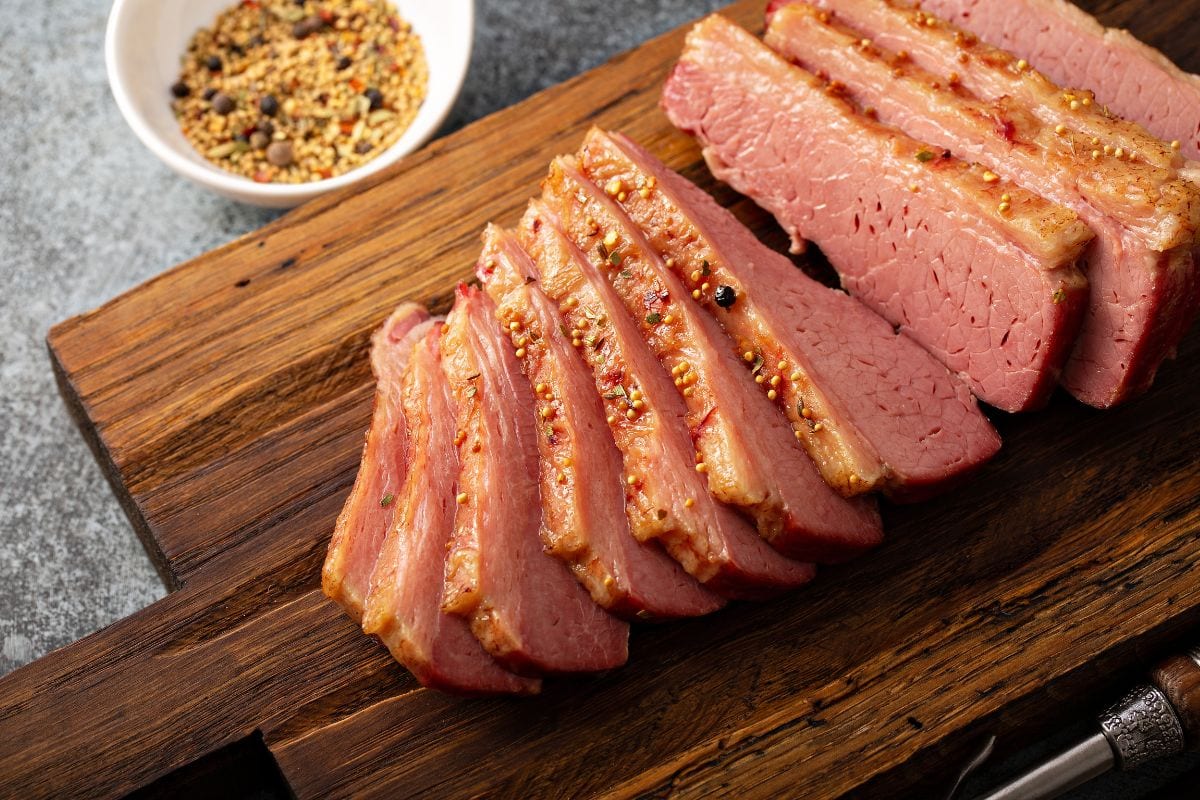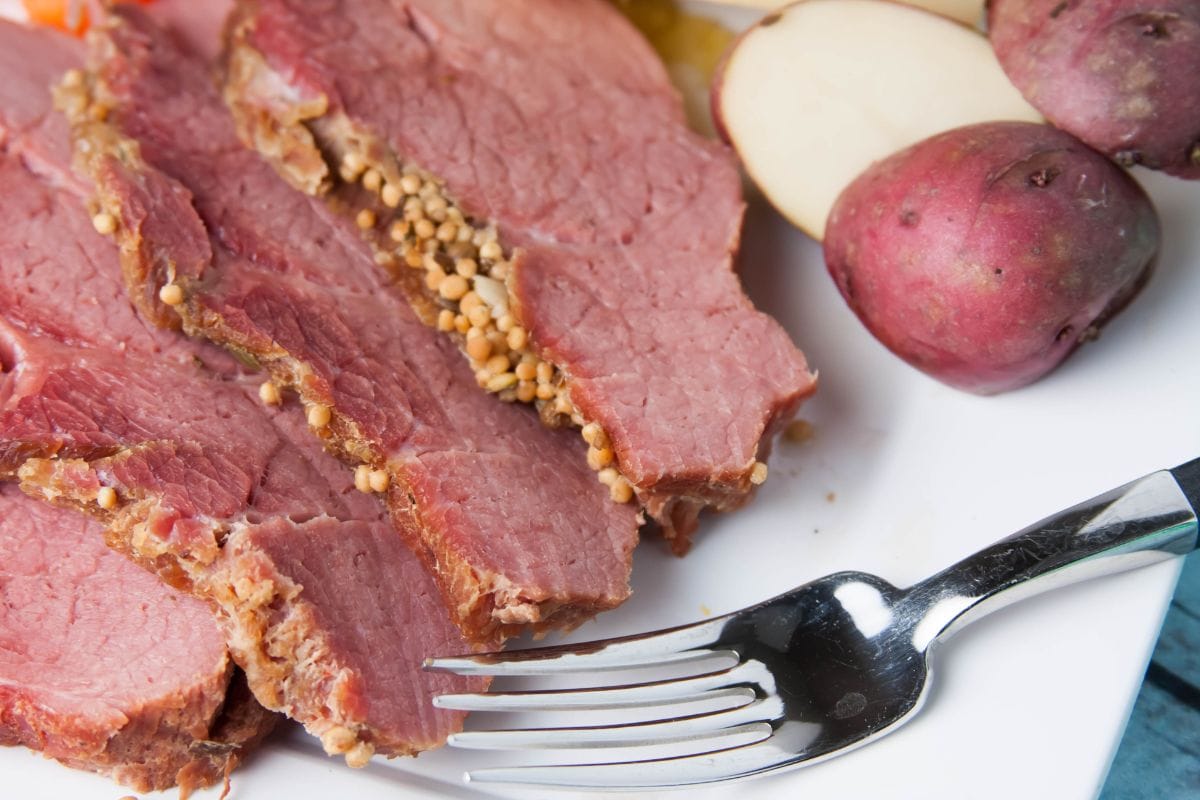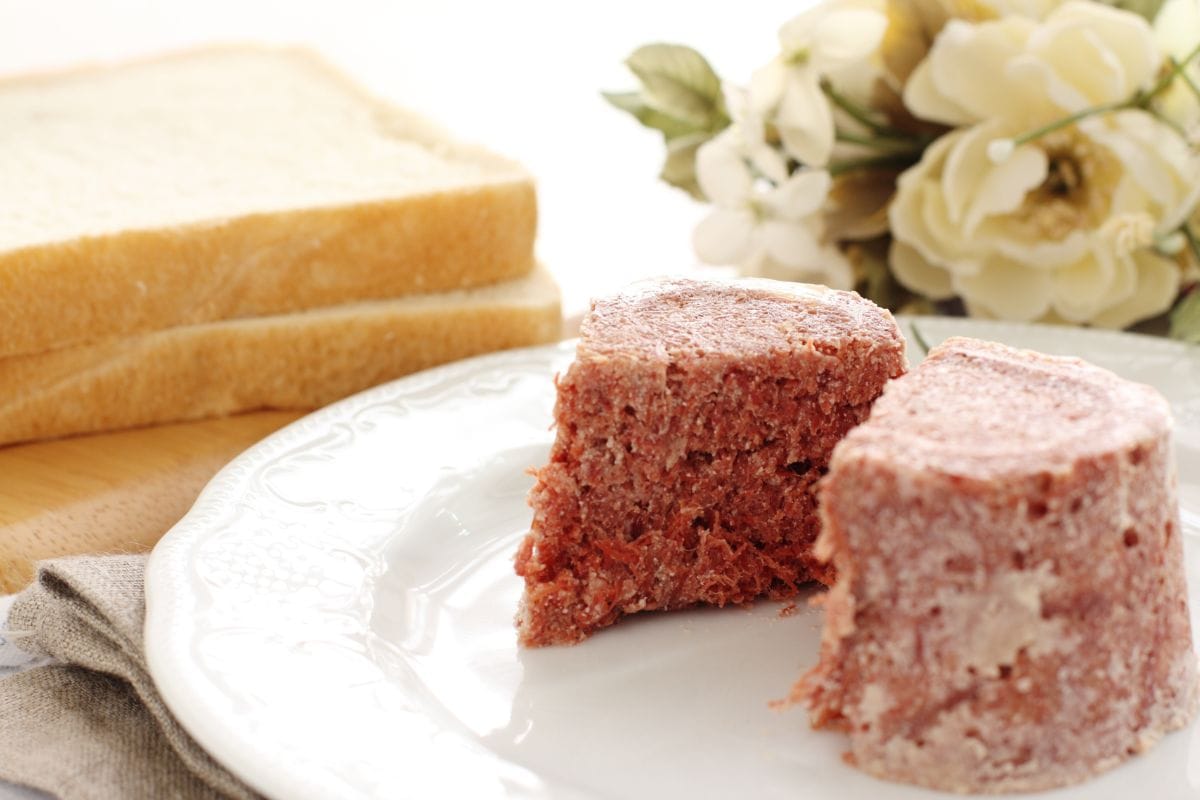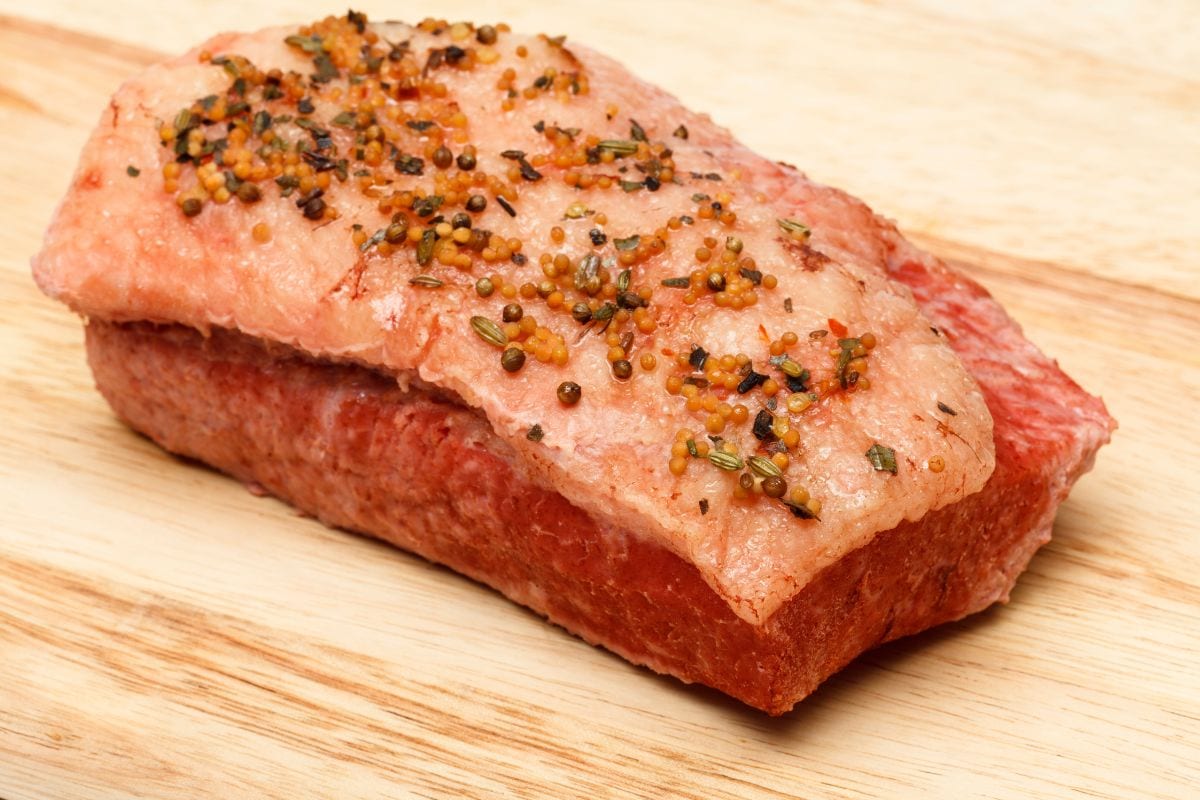Yes, you can overcook corned beef. I’ve done it. It will be tough and as chewy as jerky: a complete anticlimax to the elegant meal you planned. The two most common mistakes that cause overcooked corned beef are cooking it over high heat and cooking it for too long.
One of the basic lessons from my culinary classes was that different cuts of beef require different cooking methods. Corned beef, made from beef brisket flat, should be cooked “low and slow.”
I put together this article as the ultimate guide on how corned beef ends up overcooked and how you can avoid it. I have also shared how I prepare corned beef and how to salvage it if it overcooks. Let’s get into it.

Your beef will end up tough and overcooked if you make either of these two mistakes:
Corned beef and high temperatures do not go together. Don’t try to cook corned beef hot and fast. Brisket is expensive, and you’ll end up with a tough, inedible hunk of meat.
Brisket yields best results when cooked over low heat for extended times. Low and slow is the way to go with corned beef.
Cooking the meat too long also results in leathery beef. I recommend removing your corned beef from heat when its internal temperature gets to 203°F.
After you remove meat from a heat source, its temperature continues to rise. This is known as “carryover cooking.” Removing the brisket at 203°F will account for carryover cooking during the resting period.
When it comes to cooking corned beef, the right cooking method comes down to your preferred cooking gear.
You can make incredible smoked corned beef with your smoker or grill. Or, you can braise corned beef on your smoker or in the oven. Follow my instructions, and you’ll churn out fork-tender corned beef every time.
Here’s a bird’s eye view of how to do it:
If you follow my guidelines, you can’t go wrong.
Braising your corned beef on your smoker will yield results that are better than any deli. Make sure you buy brined corn beef and not the ready-to-eat stuff from the deli – I’ll talk more about what type of corned beef to buy later in this article.

Yes! You can turn that corned beef into the best Reuben you’ve ever tasted.
Note: these serving options assume you’ve already cooked the corned beef.

Yes.
I always slice corned beef (and all cuts of meat) against the grain instead of along the grain. This cuts through the fibers, making them easier to chew.
If you choose to braise your corned beef, check to make sure there’s enough liquid in the pot as it cooks. The corned beef should be completely submerged in liquid.
If you end up overcooking the beef, don’t panic! Here’s how you can save overcooked corned beef.
Corned beef, also called salt beef, simply refers to a salt-cured beef brisket.
Corning is a method of curing meat that dates back to before refrigeration. Meat would be dry-cured using salt particles that were as huge as kernels of corn to preserve it. Thus, “corned” beef was born.
Today, we don’t actually “corn” beef. We brine it to give the beef it’s distinct and irresistible flavor. Other spices added to the brine solution may include bay leaf, cinnamon, coriander, pickling spice, and garlic, depending on your preference.
Beef brisket flat is the most commonly preferred cut for corned beef. The beef brisket is cut from the breast region of a steer between the stomach and the shoulder. It gets plenty of exercise, making it a tough cut of meat. However, through the magic of low and slow cooking, brisket can transfer into meltingly tender beef.
Corned beef can also be made from other cuts like the rump and round cuts. However, I find these cuts inferior, and I recommend buying corned beef made from brisket.
Yes, but the process is challenging – it takes around a week. It’s an easy process to screw up, and if you do, you’ve got to throw out an expensive chunk of meat. I think it’s easier to purchase brined corned beef from your grocery store or butcher.
Beware, corned beef comes in two forms. You can buy ready-to-eat corned beef, which has already been cured, cut, and cooked. Don’t use this stuff.
Instead, buy brined corned beef. This is a majestic hunk of brisket that’s been cured, and is usually sold wrapped in heavy-duty plastic with some brine still in the packaging. It’s uncooked, and it’s the type of corned beef you should buy.
Fear not. It’s supposed to look like that. Corned beef will be pink even after it is fully cooked. Nitrites in the pink curing salt used in the curing process give the meat its pink hue.

You should use an instant-read thermometer or a digital meat probe to check the internal temperature of your meat. I find the ThermoPro meat thermometer fast and user-friendly.
For fork-tender beef, aim for a target temperature of 200°F-210°F. I find 203°F to be the sweet spot for my corned beef. Target temp refers to the final temperature your food gets to while resting.
If you don’t have a meat thermometer, test for doneness using a fork to pull apart the meat from the edges. The meat should be easy to pull apart and supremely tender. If the beef isn’t fork tender, keep cooking until it is.
At an internal temperature of around 160°F, the temperature of the meat will stop rising. This can last for hours. Don’t panic. This is called the stall and is to be expected. Don’t crank up the heat. If you’re smoking your corned beef, don’t wrap it with a “Texas crutch,” as this can dislodge the rub.
It depends on the cooking method you go with and the temperature you cook at, as well as the size of the brisket. When I smoke corned beef at 225°F, I plan that the typical 4-5 pound cut will be on the smoker for at least 10 hours.
If I’m braising the 4 pound roast of corned beef in the oven or on the stove, I plan for around three to four hours of cooking time at 300°F.
Why the higher temp and shorter cook time when using an oven? The answer is smoke. You don’t need the longer cook time because you’re not trying to impart all that smoky goodness into the beef. So you can bump the temperature up a bit and cook your corned beef faster.
Regardless of your cooking method, cook to temperature, not time. If you want tender beef that will make a killer reuben, take it off the heat when it gets to 203°F.
There you have it. A foolproof guide to making your own mouth-watering corned beef at home.
Don’t forget to rinse your corned beef (do it a few times if you can). Not rinsing the excess pink curing salt from the beef will leave your meat so salty it’s almost unpalatable. Also, make sure you’re buying uncooked corned beef. It should come in a sealed, heavy-duty plastic bag.
Whether you opt to use your smoker or your stove, monitor those cooking temperatures. 225°F is ideal on the smoker, while 300°F will get the job done (in a faster time) in the oven. Monitor your cooking temps, and pull your corned beef from the cooker when its internal temperature reads 203°F on a digital thermometer.
As, as mentioned earlier, you could ruin the beef if you cook it under high heat. Cooking the corned beef for too long or not long enough are also good ways to ruin an expensive cut of meat.